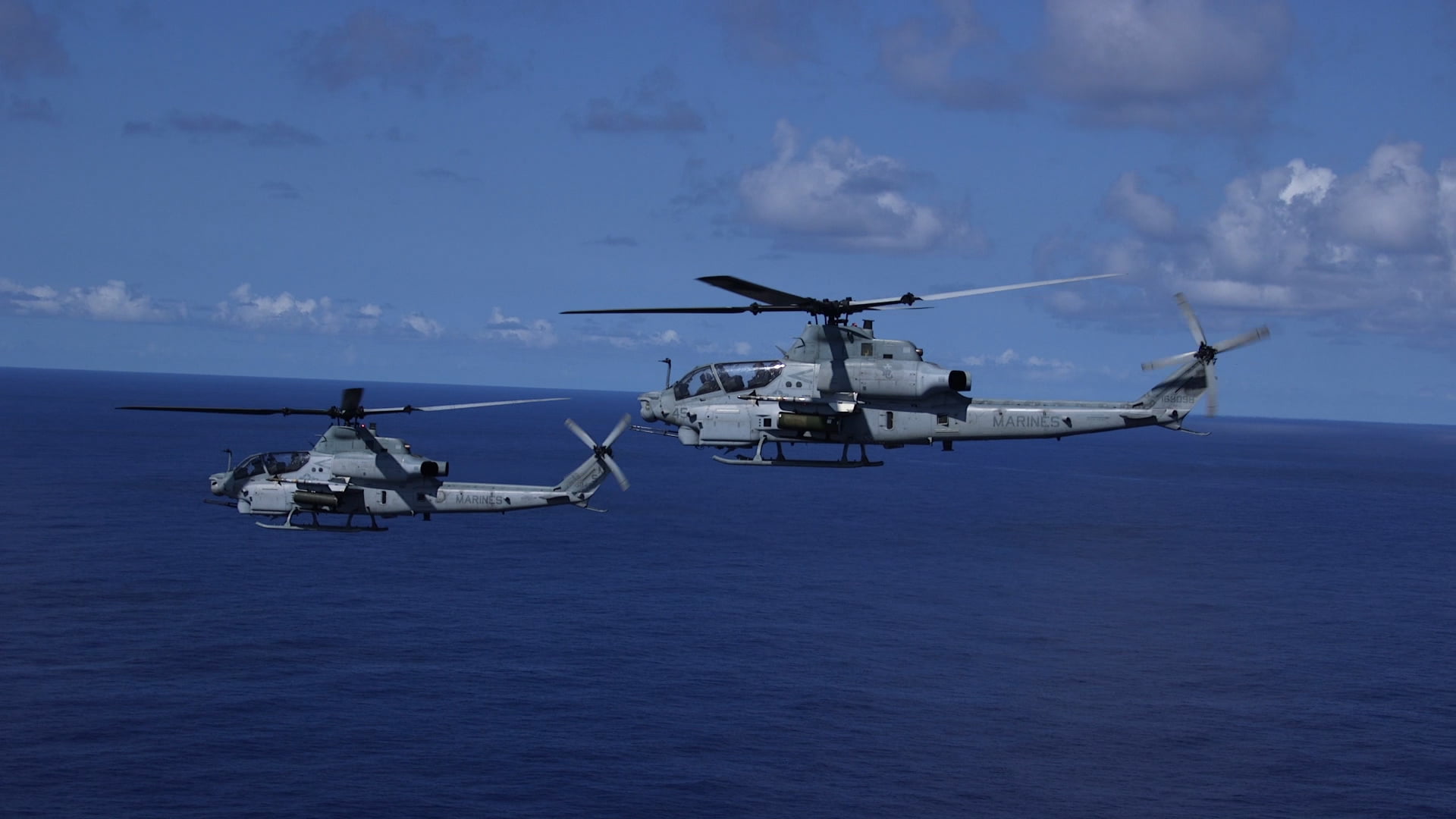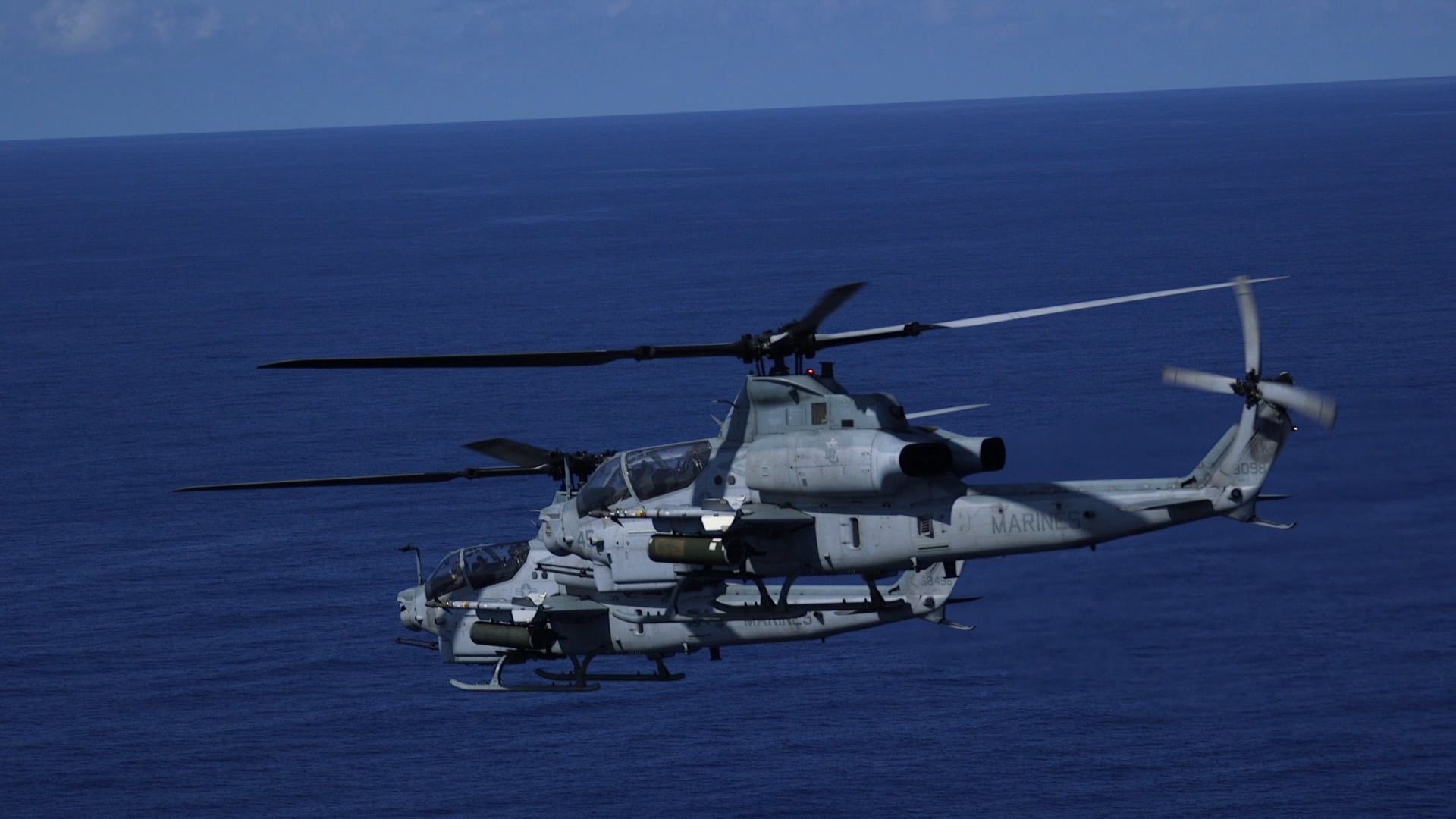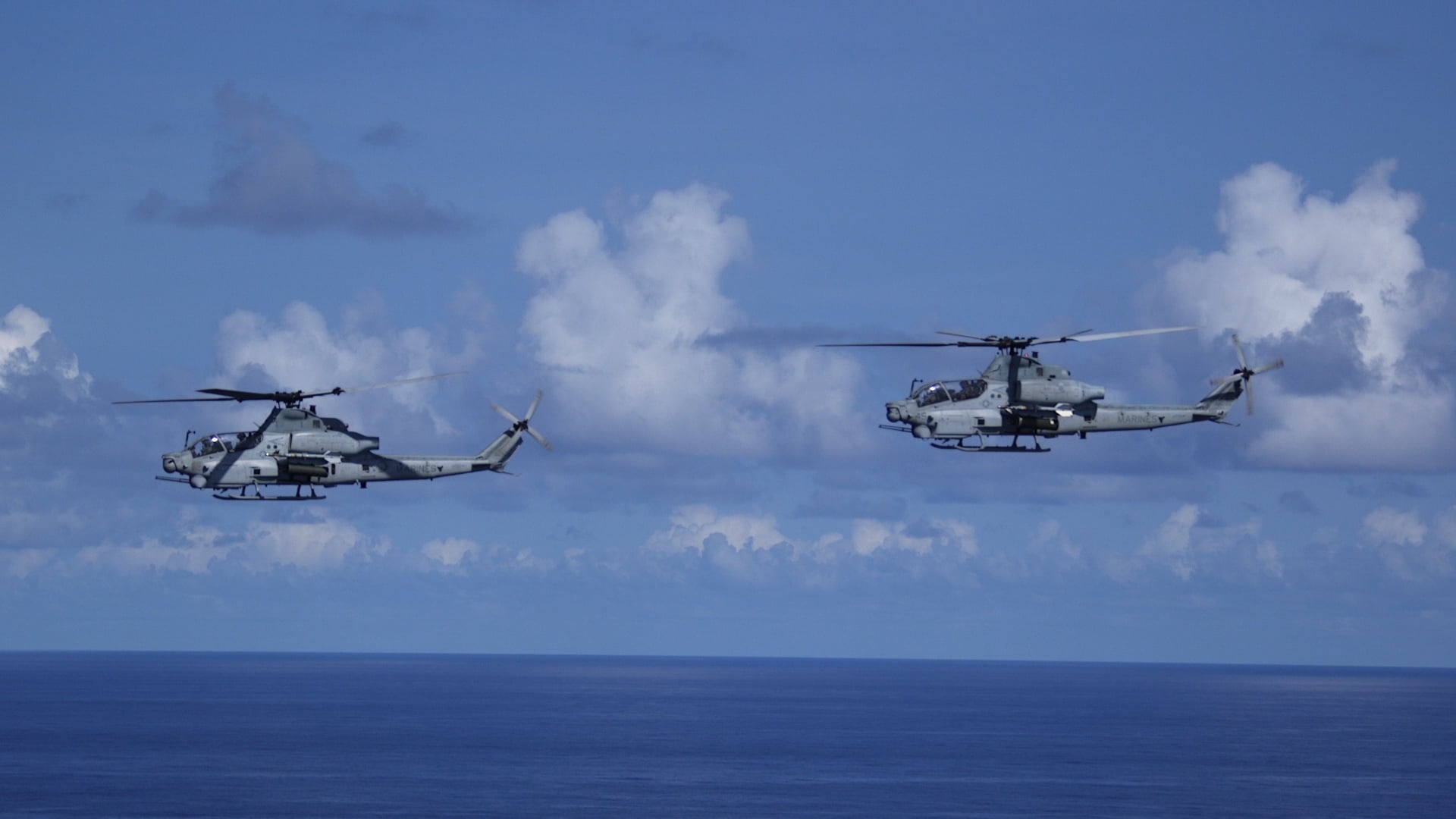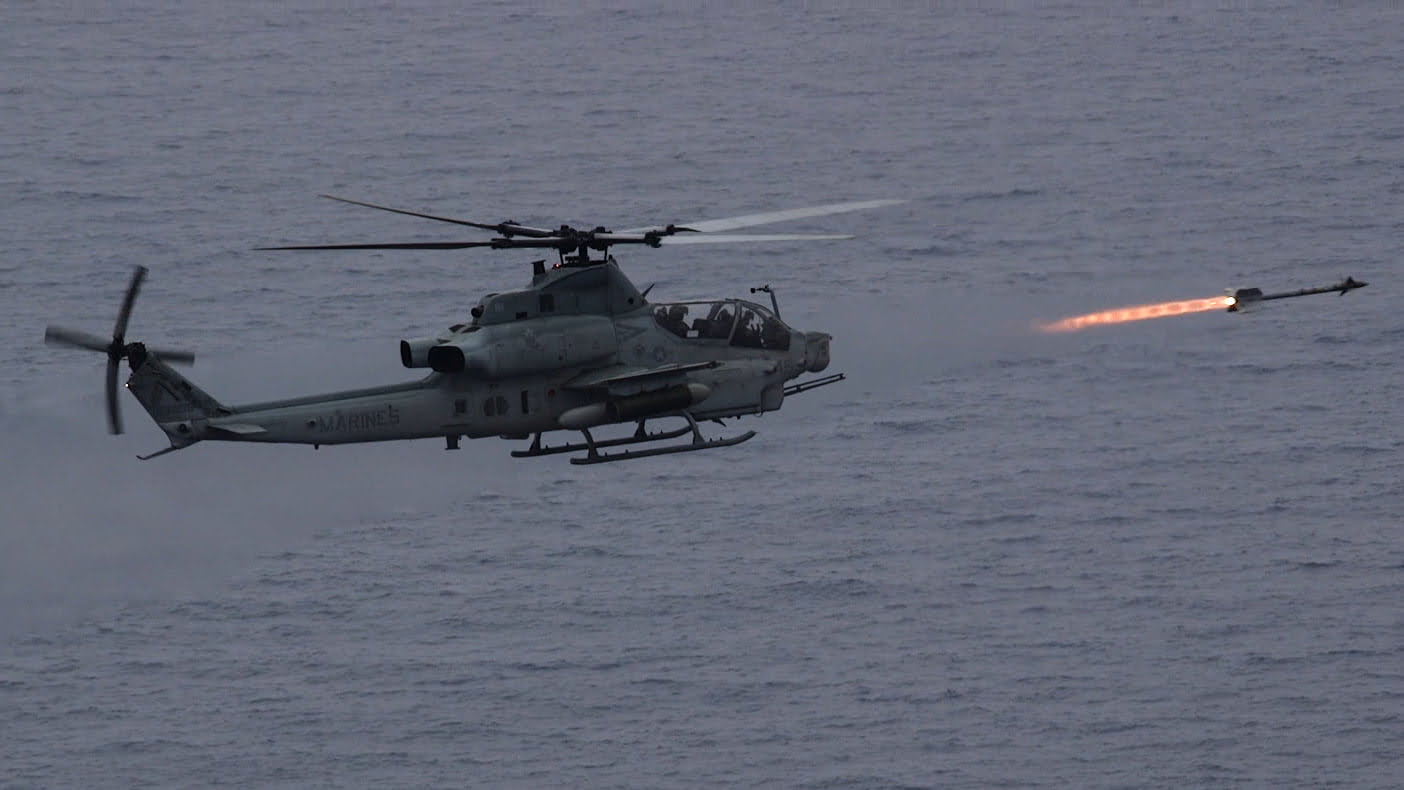By Robbin Laird
A decade ago I went to a series of Bold Alligator exercises.
These exercises were generated to reshape a return to the sea for the US Navy and USMC team after a long period of focus on the land wars. A whole generation of Marines had seldom operated from a sea base.
Those exercises put in motion the learning curve of how to operate from the sea, but it was happening under the influence of an evolving strategic environment, which included the push by China into maritime operations and the Russians rebuilding their air force and navy. In addition, several littoral nations were building out their maritime security and presence forces.
The sea was becoming more crowded, and the level of lethality operating at sea was rising,
This evolving environment, plus learning the skills to operate a 21st century Navy-Marine Corps team started with the Bold Alligator Exercises but has accelerated as both the Marines and the Navy have focused in the past five years on enhancing their capabilities for distributed integrated operations.
In the course of this evolution, the ARG-MEU is morphing into the amphibious task force and along with that process, the capabilities onboard the amphibious fleet have been enhanced, with the maturing of the Osprey, the coming of the F-35B and C to the fleet with their ability to work with USAF and allied deployed F-35s in shaping a wider SA and C2 web, and leveraging the capabilities of the evolution of a core capability used by the Marines heavily in the land wars, the H-1 capability.
Not as newsworthy or flashy as Ospreys or F-35s, the H-1 “family” of attack and lift helicopters has emerged from legacy systems to provide a very flexible package of multi-mission capability in support of the MAGTF. The AH-1Z Viper and the UH-1Y Venom are the replacements for the legacy H-1 platforms.
But they provide significant improvements over the legacy platforms. And part of that improvement is redesign which provides 85% commonality between the two platforms, which obviously then leads to significantly reduced support requirements and support costs.
Recently, I had the chance to talk with Major Thomas Duff and Mr. Michael Manifor, HQMC Aviation, APW-53, Attack and Utility Helicopter Coordinators, about the capability and its operational use in the land wars, and its significant role in operating from seabases going forward as well.
According to the APW-53 leaders, “The H-1s provide the vital link for fires and assault support integration between ground/surface forces and aviation forces. They are a trusted asset to the ground/maritime force commander.” The H-1 package consists of an Offensive Air Support (OAS) platform, the Viper. This aircraft provides lethal fire support to the ground/surface commander for the embarked Marines but also plays a key role with regard to maritime operations which are discussed later in the article. The Venom is a very flexible utility platform, which provides flexibility for the maritime and joint forces. It provides maneuver, logistics and fire support for the MAGTF.
The two aircraft share significant key elements of commonality which enhances supportability of the H-1, whether on land at FOBs, or at sea. 85% of maintenance significant components are identical. According to the APW-53 leaders, “H-1s operate faster than most sea-based connectors, require significantly less fuel, and possess a smaller footprint than any other manned aviation platform.
“They are highly mobile, rapidly deployable, and certified for air capable ships to include LHD, LPD, LSD, LCS, cargo (T-AK/AKE/AKR), and CRUDES (Cruiser-Destroyer).”
They identified a number of key capabilities which the two platforms share.
They underscored that “both Viper and Venom have a redundant structure: twin T700 engines, Dual hydraulics and Dual Tandem Actuators; the two helicopters have ballistic tolerance and fuel system protection; they both have an ergonomic cockpit with redundant screens and Hands-On-Collective-And-Stick (HOCAS), thereby reducing cockpit workload and time for target hand-off; both have Increased Situational Awareness and reduced workload through the Optimized Top Owl (OTO) Helmet and Helmet Mounted Sight Display (HMSD) and that this last system provides seamless target handoffs between pilots and sensors.”
Given the different roles of the two aircraft, there are capabilities which are unique to each as well. The Viper has an effective Target Sight System which provides increased standoff for enemy engagement and survivability as well as carries both air-to-air and air-to-ground weapons. The Venom flies with a Brite Star Targeting System which provides increased standoff for enemy engagement and survivability as well as air-to-ground weapons.
With regard to the Viper, the helicopter has been built from the ground up as a maritime attack helicopter. But because it is fully integrated into MAGTF operations, and operates throughout those operations, it plays a multi-mission role with the deployed Marines. In fact, given the operational envelope within which the helicopter has operated and contributes, this broadens my understanding of what a multi-mission capable attack helicopter can do for the combat force.
As it was put to me, the Viper is involved in the entire span of assault operations. Prior to an assault, they prep the battlespace, including doing armed reconnaissance. They support fixed wing aircraft in a deep air support role, and when the Ospreys and CH-53s advance to the objective area, they provide an air escort role. With Marines in the objective area, they provide direct ground support for ground movement working directly with the Ground Combat Element.
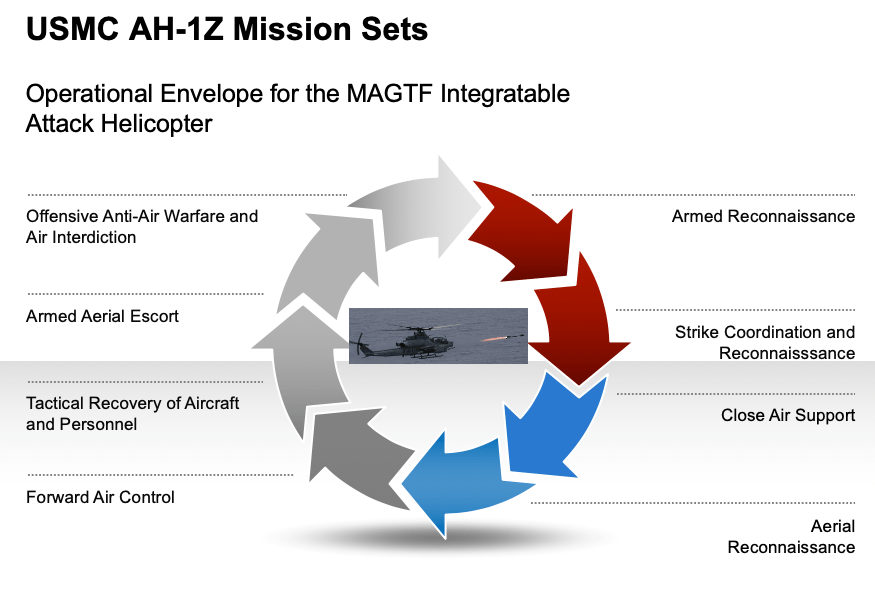
The aircraft has onboard systems which allow it to play this variety of roles, including a fully integrated cockpit and fire control system. Both aircraft have modern EW and sensor systems which allow it to operate in the complex battlespace and to provide for enhanced ground combat support.The experience in the land wars has in a way obscured that the two helos have been designed from the ground up to be central players in the return to the sea and the evolution of distributed integrated operations. Physically, the aircraft are fully marinized. The systems onboard are also marinized which means that the aircraft are fully integratable with the ships on which they operate, and can move across the shipboard chess board in the distributed engagement space as well.
Because their electronic systems are marinized, they can fit into the flow of ship operations, rather than having to be treated as special cases landing onboard a ship to be transported to an area of interest. They are integratable assets within a ship ops tempo.
With their various physical design assets for at sea operations, they fit right into a major issue for shipboard operation, which is maximum use of deck space which is what deck spotting is all about. The main rotor blades of the two aircraft can be folded which allows for maximum use of deck space and again management of the aircraft within a ships’ operational tempo and work flow.
In fact, the two aircraft have been designed from the ground up to operate at sea. The APW-53 leaders highlighted that the aircraft are built through a wet lay-up manufacturing process which provides inherent protection from airframe corrosion, flies with corrosion resistant composite rotor blades and hubs, operates with aluminum gearbox cases and the helos have waterproof seals throughout.
We discussed as well how the Viper contributes to at sea operations as well as being able to support embarked Marines. With its reconnaissance capabilities, the aircraft can support security and sea control missions, something which today’s members of an amphibious task force can clearly do in addition to projecting power ashore.
As the APW-53 team noted: “With its air-to-air and air-to-ground munitions, the Viper can provide valuable offensive and defensive capability for the Amphibious Task Force against both enemy ships and aircraft. The Venom can be used the primary means of moving personnel and smaller equipment from ship-to-shore or ship-to-ship for Expeditionary Advanced Based Operations (EABO) and provide close fires in support of ground forces and connectors.”
The APW-53 team added that “capacity exists for future modifications that maximize lethality and survivability and facilitate teamed engagement options versus near-peer weapons systems (anti-ship, long range precision strike, and air-to-air). Future H-1 system upgrades are a stepping stone to ensure proven modern systems are integrated onto the Future Vertical Lift platform.”
With regard to targeting, this means that the Viper will be able to provide targeting data for another platform or provide a targeting solution identified by another source as well.
Put in other terms, what has been learned in the land wars is that the H-1 family can provide a wide range of support to the deployed Marine. What we also are seeing is that the wide range of support capability coming home to the seabase, a subject we will consider in the next article.



